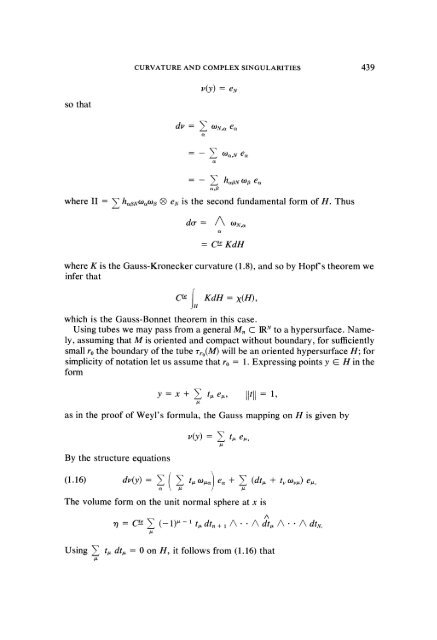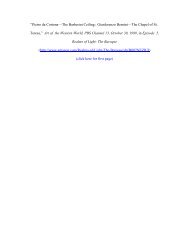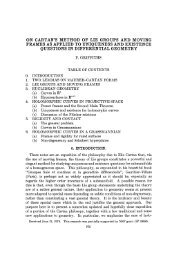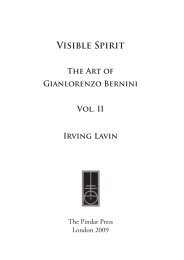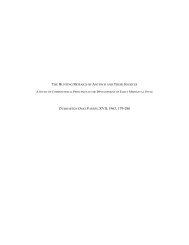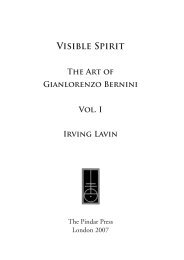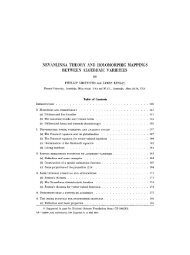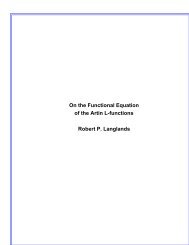View PDF - Project Euclid
View PDF - Project Euclid
View PDF - Project Euclid
Create successful ePaper yourself
Turn your PDF publications into a flip-book with our unique Google optimized e-Paper software.
so that<br />
CURVATURE AND COMPLEX SINGULARITIES 439<br />
v(y) eN,<br />
dv O)N,o e.<br />
E (.O(x,N e.<br />
E hahN 00 e<br />
where II h.NOo (R) eN is the second fundamental form of H. Thus<br />
do-= / tON,.<br />
Ct- KdH<br />
where K is the Gauss-Kronecker curvature (1.8), and so by Hopf’ s theorem we<br />
infer that<br />
.In Ct- KdH x(H),<br />
which is the Gauss-Bonnet theorem in this case.<br />
Using tubes we may pass from a general Mn C IR u to a hypersurface. Namely,<br />
assuming that M is oriented and compact without boundary, for sufficiently<br />
small r0 the boundary of the tube 0(M) will be an oriented hypersurface H; for<br />
simplicity of notation let us assume that r0 1. Expressing points y H in the<br />
form<br />
y x + ’, t, e,, Iltll 1,<br />
as in the proof of Weyl’s formula, the Gauss mapping on H is given by<br />
v(y) t. e,.<br />
By the structure equations<br />
(1.16) dr(y) ( . t..)e + . (dt. + t.)e..<br />
The volume form on the unit normal sphere at x is<br />
C (-1)"-t. dt+A.. Ad&A..Adts.<br />
Using t. dr. 0 on H, it follows from (1.16) that


